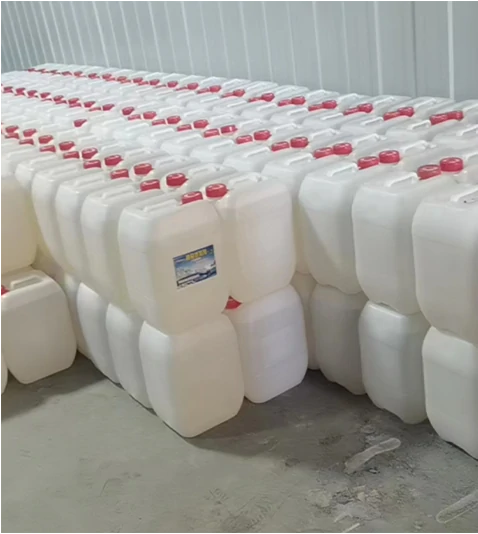
12 月 . 03, 2024 17:55 Back to list
what is the molarity of glacial acetic acid
Understanding the Molarity of Glacial Acetic Acid
Glacial acetic acid, a pure form of acetic acid (CH₃COOH), is a colorless, pungent liquid that is widely used in various industrial applications, laboratory settings, and even in culinary practices. One of the critical aspects related to the use of glacial acetic acid, especially in chemical processes, is understanding its molarity – a fundamental concept in chemistry that relates to the concentration of a solution.
Definition of Molarity
Molarity (denoted as M) is defined as the number of moles of solute per liter of solution. It is a crucial parameter used to express concentrations in physical chemistry and is vital for stoichiometric calculations in chemical reactions. The formula to calculate molarity is
\[ M = \frac{n}{V} \]
Where - \( M \) is the molarity in moles per liter (mol/L), - \( n \) is the number of moles of solute, - \( V \) is the volume of solution in liters.
Molarity of Glacial Acetic Acid
In the case of glacial acetic acid, its molarity can be derived using its density and molar mass. The density of glacial acetic acid is approximately 1.05 g/mL, which translates to 1050 g/L. The molar mass of acetic acid is about 60.05 g/mol.
To calculate the molarity, we follow these steps
1. Convert grams to moles Determine how many moles are present in a liter of glacial acetic acid. \[ n = \frac{\text{mass in grams}}{\text{molar mass}} \]
Hence,
\[ n = \frac{1050 \, \text{g}}{60.05 \, \text{g/mol}} \approx 17.5 \, \text{mol} \]
what is the molarity of glacial acetic acid

2. Calculate molarity Since this calculation assumes we have the volume of 1 L of glacial acetic acid, the molarity (M) can be directly taken as 17.5 M.
Thus, glacial acetic acid possesses a molarity of approximately 17.5 M, indicating a very concentrated solution compared to standard aqueous solutions.
Importance of Molarity in Applications
Understanding the molarity of glacial acetic acid is vital for various applications
1. Chemical Reactions In organic chemistry, preciseness in molarity ensures accurate measurements in reactions, influencing yields and product formation.
2. Dilution Calculations When working in the laboratory, one often needs to dilute glacial acetic acid to create solutions of lower molarity for use in experiments. The molarity will guide these dilutions accurately using the dilution formula
\[ M_1V_1 = M_2V_2 \]
3. Industrial Use Industries producing esters or vinegar require specific concentrations of acetic acid. Knowledge of the molarity allows for proper formulation and quality control.
4. Safety Protocols Because glacial acetic acid is a concentrated acid, understanding its molarity is crucial for ensuring the appropriate safety measures are implemented when handling it.
Conclusion
In summary, glacial acetic acid, with an approximate molarity of 17.5 M, serves various essential roles in both industrial and laboratory settings. Grasping the concept of molarity not only aids scientists and industry professionals in performing accurate experiments but also in maintaining safety and efficiency in their respective fields. Additionally, such knowledge plays a significant part in producing reliable and reproducible results in chemical research and application.
